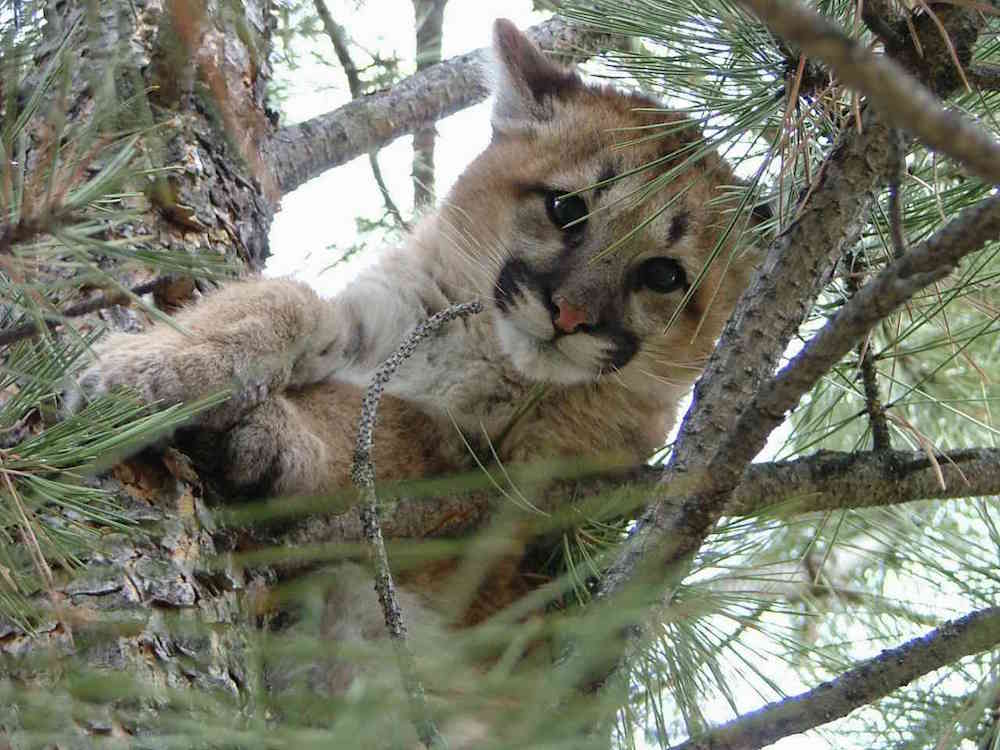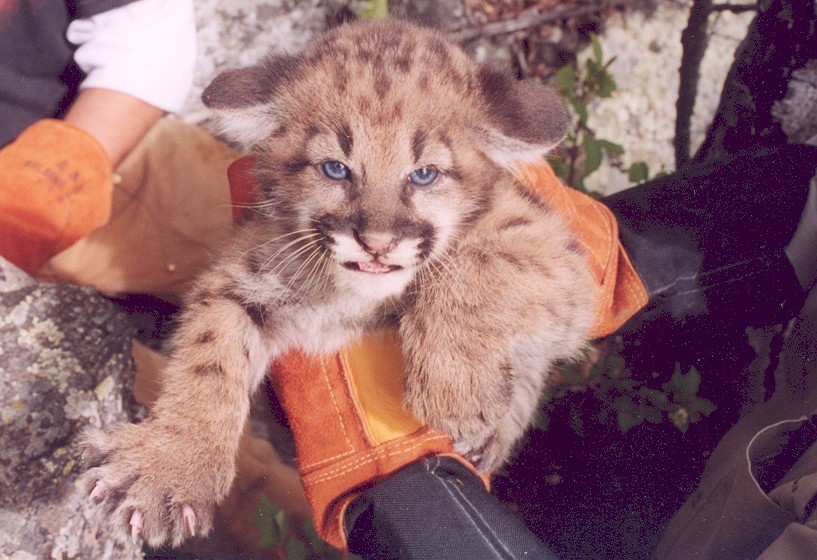Wyoming Know How | How to catch a cougar kitten

You’ll need welding gloves when the time comes, and a trusted colleague to watch your back. But there are miles of legwork ahead of you first.
Because you can’t catch a kitten that you don’t know exists. Since cougars can give birth in any season, knowledge of newborns requires intimate familiarity with a female — the kind you’ll only get with a tracking collar.
Big cats don’t put those on voluntarily.
So bait a cage trap. It might do the trick, if you’re lucky enough to find a fresh lion kill. Chances are, though, you’ll need hounds, sturdy boots and plenty of stamina just to get the ball rolling. Cougars are famously elusive, after all, and they favor terrain that your knees likely don’t.
Once you’ve managed to tree, tranquilize, collar and release an adult, the real work of tracking and monitoring can begin. You could, with top-of-the-line GPS collar technology, keep rough tabs on her whereabouts from a desk. The field time required by old-school radio collars, though, has it’s advantages.
Dr. Dan Thompson, Wyoming Game and Fish Department’s large carnivore section supervisor explains, “There’s no substitute for going out, seeing where an animal lives, how it lives, and getting your hands dirty… You find information, you gain knowledge, that you’ll just never get from dots on a map alone.”
As a scientist, you can’t put a price on that kind of experience. Your agency can though, and it’s got a mission to fulfil, a public to serve and a budget to manage. So don’t take it for granted when you get the opportunity to advance our understanding of, say, kitten survival rates, dispersal patterns, or gene distributions. A real pro never does.
Head for the hills. Examine her tracks. Listen. If, occasionally, you find her in your binocular, just watch her go about her business. Those moments alone are worth the wear and tear.
Then, when she stops roaming for longer than a day or two, make a note on the calendar. She’s denned up to give birth and care for a litter. And you’re on the clock.
You’re aiming for a tight time window. Human handling is too stressful for the little guys at three weeks. But by nine weeks, they’ll be climbing and leaping. … you’ll never bring them to hand. So start hunting that den. Gather as many clues as you can about its whereabouts and the mother’s movements.
And be ready to go in partially blind. Maybe you’ll have triangulated the den to a patch of hillside, a jumble of boulders, or a short stretch of canyon, but a concise search area is no guarantee of success. Mountain lions are nothing if not good at hiding.
Which is all the more reason to be absolutely certain the female has left the den site before you approach. It’s also why you brought that trusted colleague. If the mother cuts her hunting trip short, you’re going to want a “heads up”.
Don’t rush. Focus on your surroundings. Was that dappled sunlight or spotted fur? Did you hear… a precocious little growl?
Go for the scruffs of their necks. That may mean plunging into the den after them, face first. There should be three, maybe four, so you’ll need at least one more set of hands, not counting the look-out.
Count noses. Note sexes. Pinpoint ages. Record weights. Take hair samples. Put them back where you found them.
If you’re going for ear-tags or expandable collars, you’d better be quick. Mama won’t be gone long.
And let’s hope you didn’t forget those welding gloves. At two months, the adorable little up-and-coming alpha predators can already deliver one heck of a bite.
Photos by Dan Thompson
**This story originally appeared on WyoFile.com as an installment of Matthew’s “Wyoming Know How” series — a weekly window into the lives of everyday Americans, and an intimate glimpse of the unique experiences that define our communities, culture and life in the rural Northern Rockies. For more — check out the series here.**


